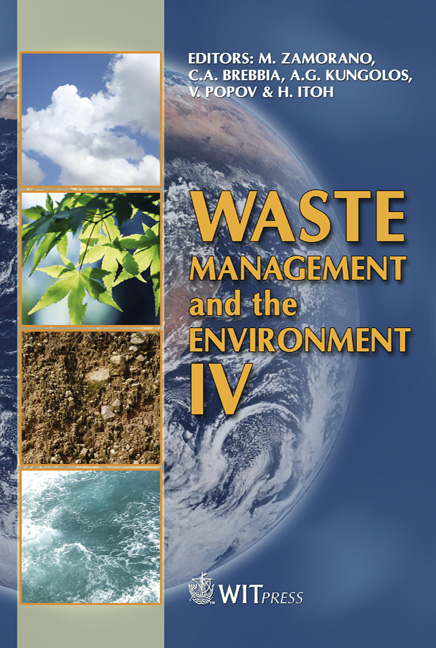Exploitation Of The Solid Waste Of Porfiritis In Pozzolanic Cements
Price
Free (open access)
Transaction
Volume
109
Pages
10
Page Range
213 - 222
Published
2008
Size
325 kb
Paper DOI
10.2495/WM080231
Copyright
WIT Press
Author(s)
G. Batis, P. Pantazopoulou & O. Stavropoulou
Abstract
The objective of this paper is to investigate the possibility of introducing a natural pozzolan named porfiritis, a natural waste product from the gold mines located in N.E. Chalkidiki Greece, as a supplementary cementing material. Blended cement was produced by replacing PC with 20% w/w porfiritis for the evaluation of the pozzolanic cement properties. Reinforced mortar specimens were either partially immersed in 3.5% w/w NaCl solution or exposed to atmospheric conditions, for a period of 6 months. The experimental methods used were: corrosion potential, corrosion rate by the Linear Polarization method, mass loss, carbonation depth and compressive strength. Based on the results of this study, it is concluded that the use of the porfiritic deposit as a blended cement constituent improves the corrosion behaviour of the mortar specimens, while no serious detrimental effect on the mechanical behaviour of the concrete is detected. Keywords: porfiritis, pozzolanic cements, chlorides corrosion, carbonation. 1 Introduction The blended cement industry is a relatively new and rapidly growing field. The literature on blended cements is extensive, as measurements at laboratory and pilot-plant scale have been carried out over a period of about 50 years. Blended cements provide specific technical advantages in comparison with ordinary Portland cement, with regard to durability in various corrosion environments. One of the most common materials classified as cementitious is natural pozzolans, natural material containing silica in a reactive form [1–3].
Keywords
porfiritis, pozzolanic cements, chlorides corrosion, carbonation.





